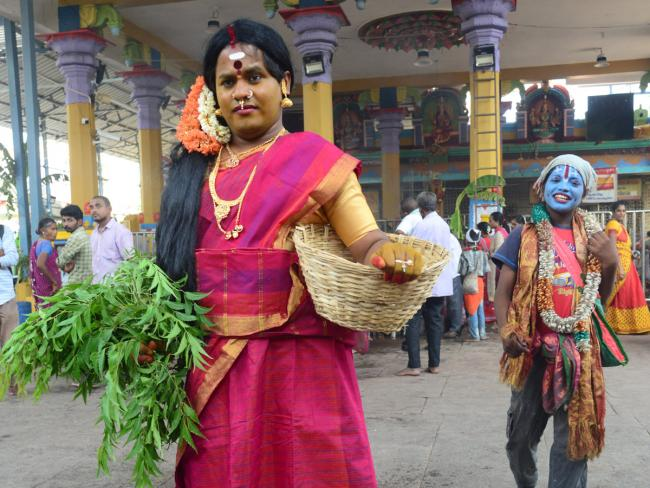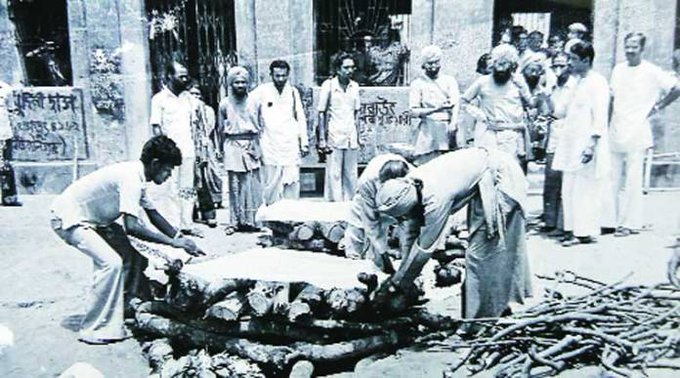#TodayinHistory Operation Shakti, when the India Govt under AB Vajpayee, conducts 5 nuclear explosions in 1998 at Pokhran over two days, the second such, after Operation Smiling Buddha in 1974. 



Of the 5 detonations at Pokhran II, the first was a fusion bomb, while the rest were fission ones. While there were 3 explosions on May 11, 1998, the other two were on May 15. The operation came to be known as Shakti or Pokhran II.
India's nuclear program started way back in 1945, when Homi Jehangir Bhabha, established the TIFR, for harnessing nuclear energy. However post the 1962 War, and death of Bhabha, the program slowed down. 

The nuclear program again picked up under Indira Gandhi, which resulted in Operation Smiling Buddha in 1974, led by Dr. Raja Ramanna. 

However post Smiling Buddha, the NSG(Nuclear Supplies Group), imposed an embargo that severely affected India's nuclear program. Lack of indigenous resources, dependence on imported technology, severely affected the program.
Subsequent events, slowed down India's progress in nuclear program even more. Even after Indira's return in 1980, there was a slowdown in testing. It was under Abdul Kalam that work began towards hydrogen bomb as well as missile program.
Though P.V.Narasimha Rao, decided to conduct the tests in 1995, he had to halt the program, after American spy satellites, picked up information from Pokhran. And there was enormous pressure from Bill Clinton to halt the program.
With Vajpayee coming to power in 1998, wide ranging consultation was held with R.Chidambaram, Kalam and other officers of the DAE regarding the tests. The go ahead was given on March 28,1988 when scientists were asked to make preparations in shortest time.
With Vajpayee coming to power in 1998, wide ranging consultation was held with R.Chidambaram, Kalam and other officers of the DAE regarding the tests. The go ahead was given on March 28,1988 when scientists were asked to make preparations in shortest time.
The main issue was that Pokhran being a flat desert, it was not that easy to hide the preparations for the program from spying satellites. It was the 58th Engineer Regiment under Gopal Kaushik, that was given the responsibility to prepare the sites under total secrecy.
The entire planning was done in total secrecy by Abdul Kalam and R.Chidambaram. Scientists of BARC, DRDO and AMDER were involved in the operation, about which many senior members of the Indian Govt did not have any idea about.
The 58th Engineer Regiment, had figured out how to avoid satellite detection, as they prepared the test sites. All scientists had to wear army uniforms to avoid suspicion. Work was done mostly during night.
The equipment was returned to original place,to give an impression of never having been moved. Bomb shafts were dug under camouflage nets, while the dug out sand was place as dunes to make it look natural.
Sensor cables were covered with sand and native vegetation, while scientists departed for other destinations under various pseudonyms, and then transported to Pokhran by army Technical staff to avoid detection.
Apart from Kalam and Chidambaram, the others involved in Pokhran-2 were
Dr. K. Santhanam; Director, Test Site Preparations- DRDO
Dr. G. R. Dikshitulu; Senior Research Scientist, AMDER
Dr. Anil Kakodkar, Director of BARC.
Dr. Satinder Kumar Sikka, BARC
Dr. M. S. Ramakumar, BARC
Dr. K. Santhanam; Director, Test Site Preparations- DRDO
Dr. G. R. Dikshitulu; Senior Research Scientist, AMDER
Dr. Anil Kakodkar, Director of BARC.
Dr. Satinder Kumar Sikka, BARC
Dr. M. S. Ramakumar, BARC
3 DRDO labs were involved in designing, testing and producing components for the bombs, including the advanced detonators, the implosion and high-voltage trigger systems. As well as weaponising, systems engineering, aerodynamics, safety interlocks and flight trials.
The bombs were transported in 4 Indian Army trucks under Col Umang Kapur, on May 1,1998, from BARC. From CST Airport they were airlifted to Jaisalmer in an AN-32 commanded by Squadron Leader Mahendra Prasad Sharma.
From Jaisalmer to Pokhran, the bombs were again transported in another convoy, in 3 trips to avoid detection, and delivered to the assembly site, codenamed as Prayer Hall.
All the 3 shafts were L-Shaped, with a horizontal chamber for the test device. The team now had to wait for wind direction. Also shaft seal failures had often occured during testing in US, UK and USSR.
May 11
After the desert winds died down, Dr K Santhanam, in charge of the site, handed over 2 keys to Dr M Vasudev, range safety officer.
At 3:45 PM all the 3 devices were detonated.
After the desert winds died down, Dr K Santhanam, in charge of the site, handed over 2 keys to Dr M Vasudev, range safety officer.
At 3:45 PM all the 3 devices were detonated.
Shakti II – A plutonium implosion design yielding 15 kt and intended as a warhead that could be delivered by bomber or missile.
Shakti III – An experimental linear implosion design.
Shakti III – An experimental linear implosion design.
The other 2 devices that were detonated on May 13, 1998
Shakti IV – A 0.5 kt experimental device.
Shakti V – A 0.2 kt Thorium/U-233 experimental device.
Shakti IV – A 0.5 kt experimental device.
Shakti V – A 0.2 kt Thorium/U-233 experimental device.
Today, at 15:45 hours, India conducted three underground nuclear tests in the Pokhran range. The tests conducted today were with a fission device, a low yield device and a thermonuclear device.- Atal Behari Vajpayee, May 13, 1998.
India became the 6th country to join the nuclear club. Predictably most of the Western nations led by US along with Japan, were outraged, and imposed sanctions. The only countries that backed India were France, Russia and to some extent UK.
The tests were an embarassing failure for American intelligence, one of the biggest fiascos ever for CIA. Even though US tried to bully India with sanctions, and signing the CTBT, the Govt refused to yield under pressure and stood firm.
And not surprisingly China and Pakistan were the biggest critics of Pokhran II, with China calling upon the international community to pressurize India into signing the NPT. While Pakistan conducted it's own tests at Chagtai.
AB Vajpayee, George Fernandes, APJ Abdul Kalam, the 3 men behind Pokhran II, no longer with us. But India shall forever remember them. 





May 11 has officially been declared as #NationalTechnologyDay in India, in honor of Pokhran II, where individuals with outstanding achievement in Science and Tech are awarded.
• • •
Missing some Tweet in this thread? You can try to
force a refresh

 Read on Twitter
Read on Twitter























